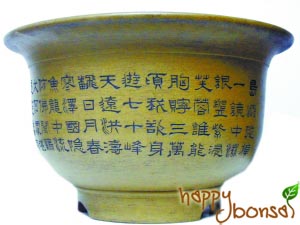Many of us wonder what tree species we should use for our mame bonsai and shohin bonsai. While some species are more difficult to train as mame bonsai or shohin bonsai than others, I would say that most type of tree that are used for regular bonsai is also suitable for mame and shohin bonsai.
Ideally, we should go for a plant with naturally small leaves. This will make it easier for us to train the bonsai tree as it grows. Deciduous (such as maples, quince, azaleas, elms) and Conifers (such as junipers, pine, and cypress) make good shohin bonsai trees. I would also recommend tropical and semi-tropical trees (such as Ficus, Portulacaria, and Australian Brush Cherry). All these tree species just mentioned are good choices for shohin bonsai and mame bonsai.
As our shohin bonsai grows, we will need to do leaves and root ramifications. This can be quite difficult, as the leaves and roots of our shohin bonsai tree are so small in size. Yet, if necessary, we can use a magnifying lens to help us when carrying out these activities on our shohin bonsai trees and mame bonsai trees. For more details, check this article – Training & Pruning Small Bonsai Trees.















